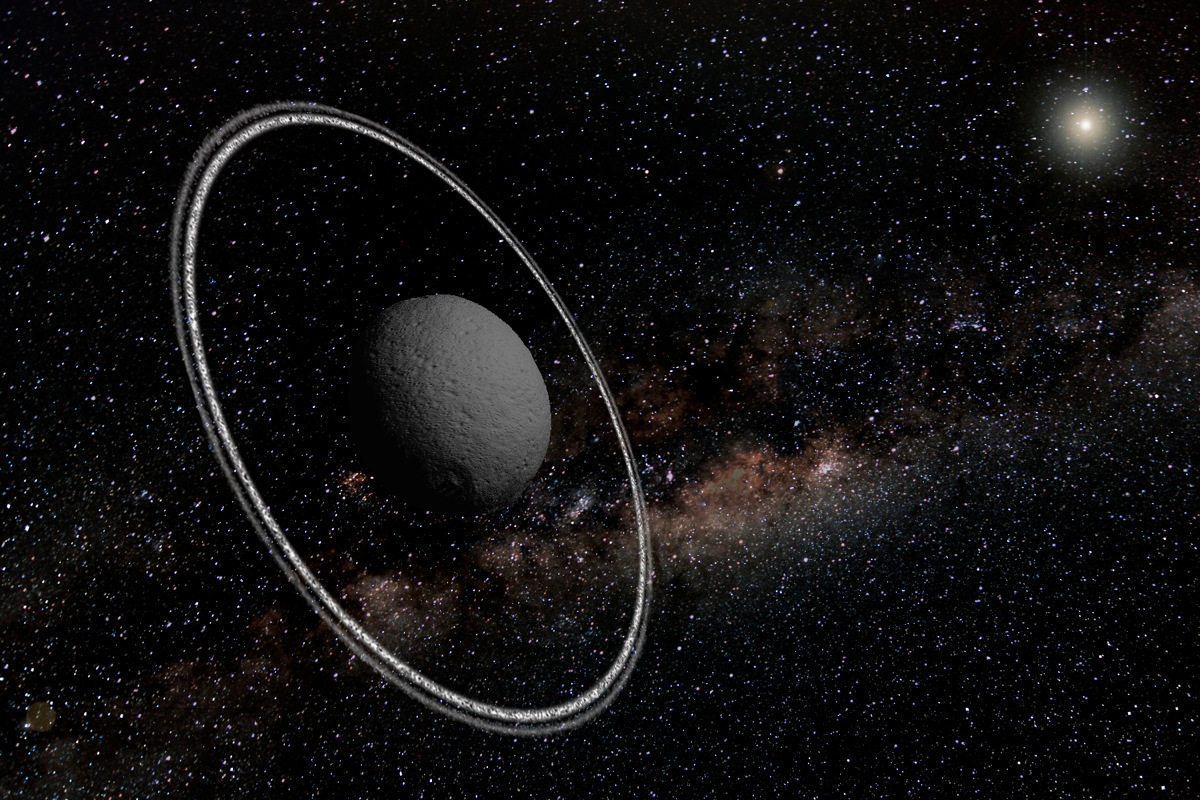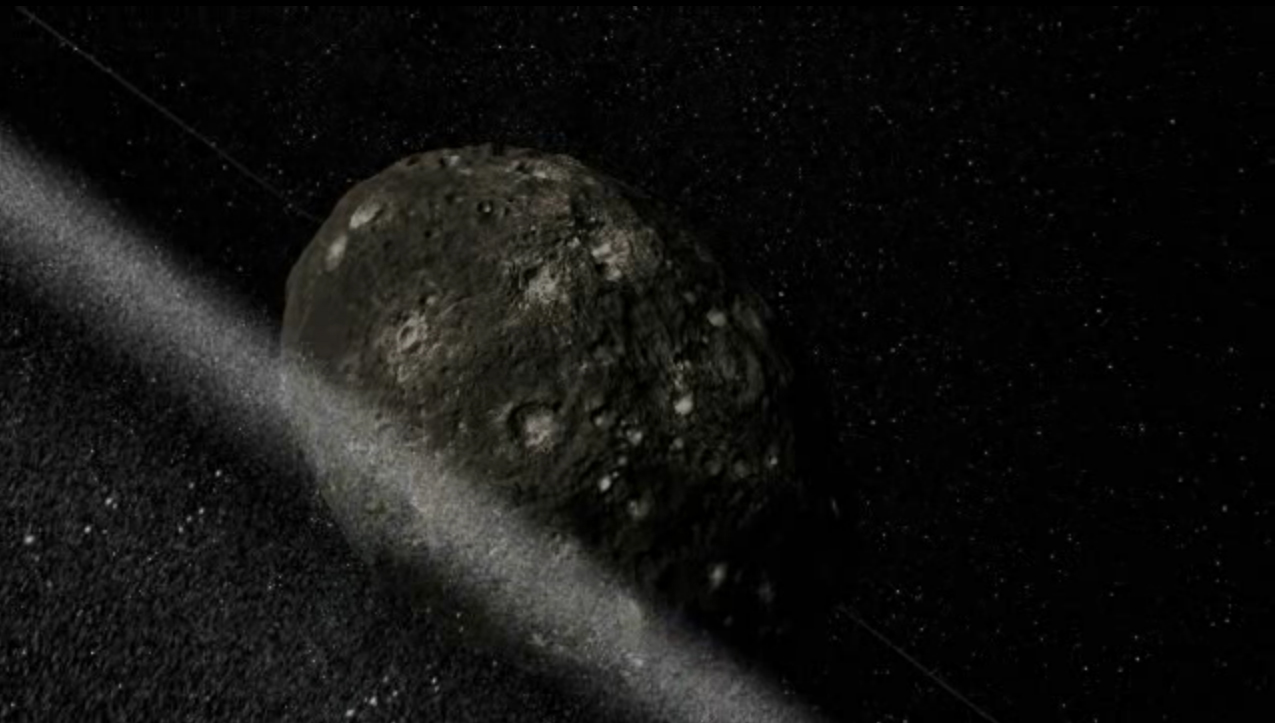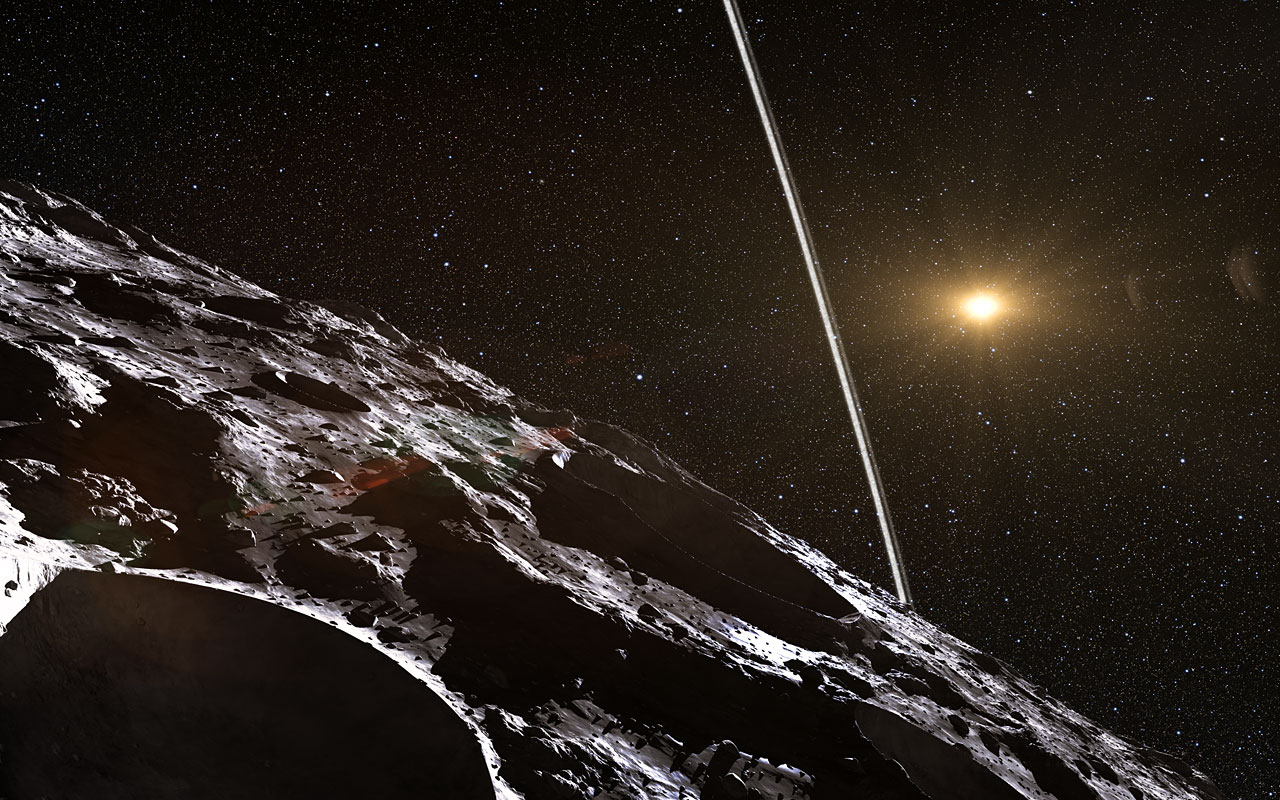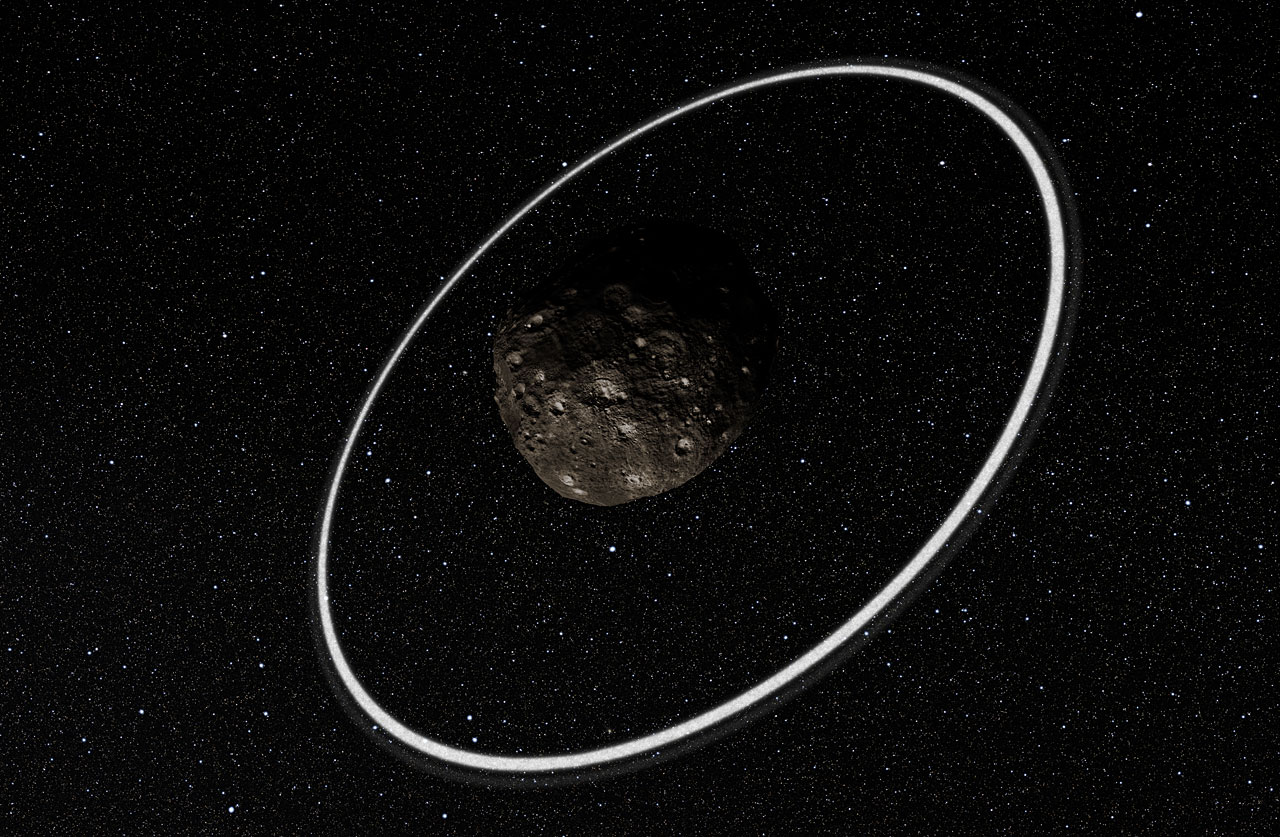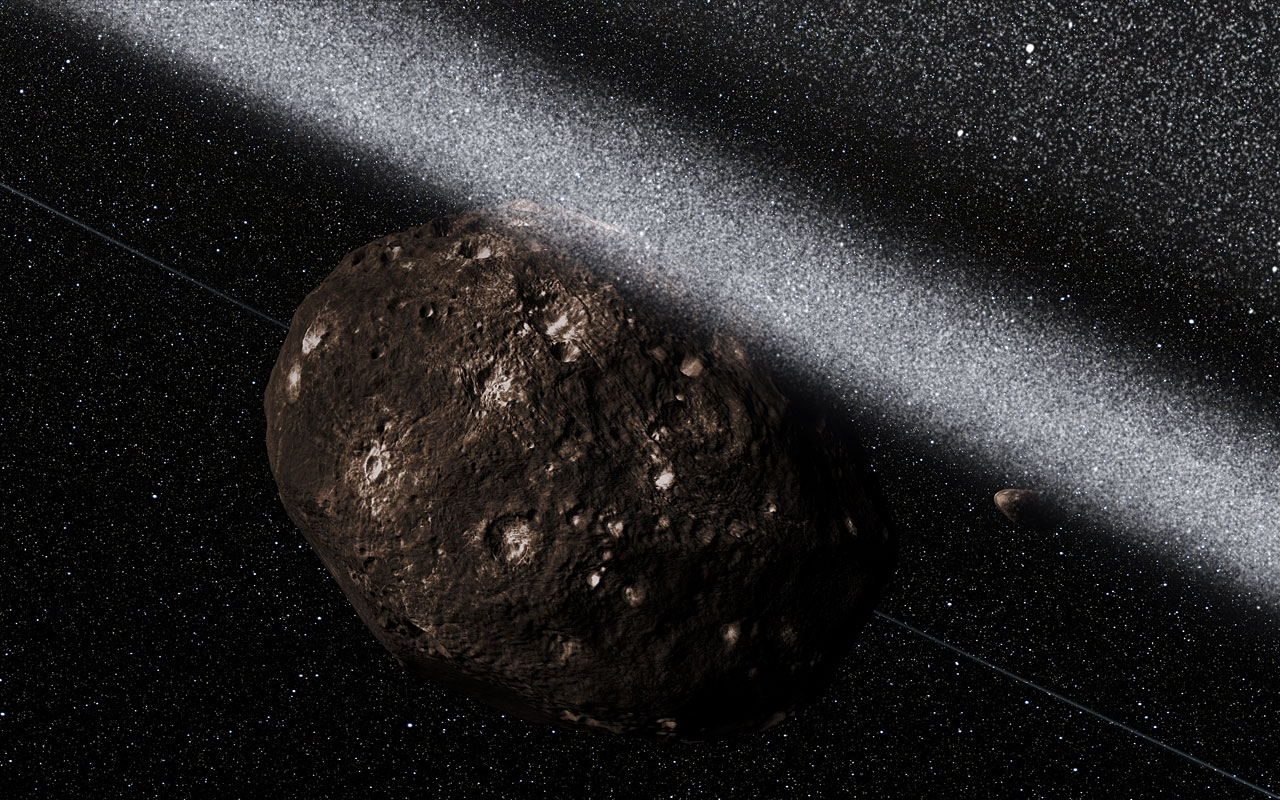Asteroid Chariklo Has Rings: Images of a Space Rock Oddity (Gallery)
Rings Surrounding Asteroid Chariklo
The rings of Saturn are among the crown jewels of our solar syste, but it turns out that asteroids can have rings of their own, too. Here: See an artist's view of the rings surrounding the asteroid Chariklo, which is only 155 miles (250 kilometers) across. The asteroid is the first non-planetary body in the solar system discovered to have its own ring system. Image released March 26, 2014. [See videos and read the full story here]
Asteroid Chariklo Has Rings: Artist's View
An artist's depiction of the asteroid Chariklo, as seen from between its two rings. The asteroid is located between the orbits of Saturn and Jupiter, and is the first ever to be seen with rings. [See videos and read the full story here]
Artist’s Impression of the Rings Around Chariklo
This artist's view of the rings surrounding the asteroid Chariklo, which is only 155 miles (250 kilometers) across, shows how the rings may look from the space rock's surface. The asteroid is the first non-planetary body in the solar system discovered to have its own ring system. Image released March 26, 2014. [See videos and read the full story here]
Artist’s Impression Close-Up of the Rings Around Chariklo
An artist's illustration shows what the rings surrounding the asteroid Chariklo may look like from a distance. The asteroid is the first non-planetary body in the solar system discovered to have its own ring system, and is the smallest to have rings as well. Image released March 26, 2014. [See videos and read the full story here]
Asteroid Chariklo Rings Light Dip
This still from an European Southern Observatory video shows the light dips caused by the asteroid Chariklo and its rings (bottom) when they passed in front of a bright star (center). The asteroid between the orbits of Saturn and Uranus is the first non-planet ever found to have rings. Image released March 26, 2014. [See videos and read the full story here]
View from Inside the Rings Around Chariklo
This artist’s impression shows the view from inside the ring system around the asteroid Chariklo (at center) with potential shepherding satellites also visible. The asteroid is the first non-planetary body in the solar system discovered to have its own ring system. Image released March 26, 2014. [See videos and read the full story here]
Asteroid Chariklo Rings: Star Occultation
The 155-mile wide asteroid Chariklo blocks light from a bright star, as seen from Earth, in this still from a European Southern Observatory video. The asteroid's star occultation revealed two rings around the asteroid in a surprise discovery. Image released on March 26, 2014. [See videos and read the full story here]
Breaking space news, the latest updates on rocket launches, skywatching events and more!
Asteroid Chariklo: Centaur Orbit
The asteroid Chariklo, the first ever seen to have its own rings system, is located between the orbits of Saturn and Uranus. It is the largest of the Centaur asteroids in the region. Image released March 26, 2014. [See videos and read the full story here]

Space.com is the premier source of space exploration, innovation and astronomy news, chronicling (and celebrating) humanity's ongoing expansion across the final frontier. Originally founded in 1999, Space.com is, and always has been, the passion of writers and editors who are space fans and also trained journalists. Our current news team consists of Editor-in-Chief Tariq Malik; Editor Hanneke Weitering, Senior Space Writer Mike Wall; Senior Writer Meghan Bartels; Senior Writer Chelsea Gohd, Senior Writer Tereza Pultarova and Staff Writer Alexander Cox, focusing on e-commerce. Senior Producer Steve Spaleta oversees our space videos, with Diana Whitcroft as our Social Media Editor.
